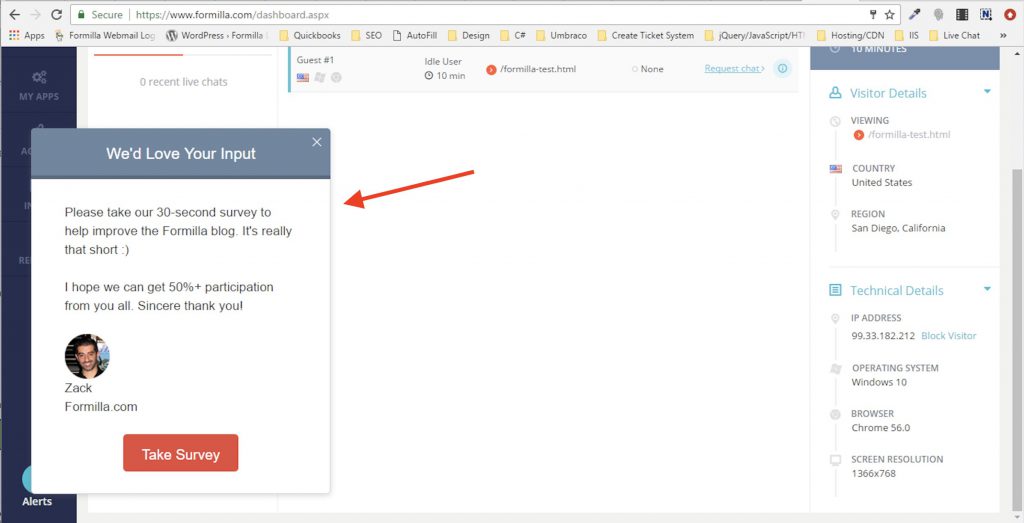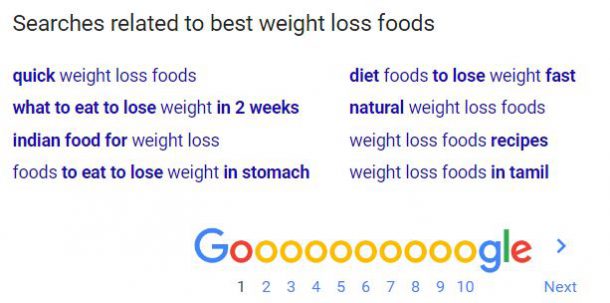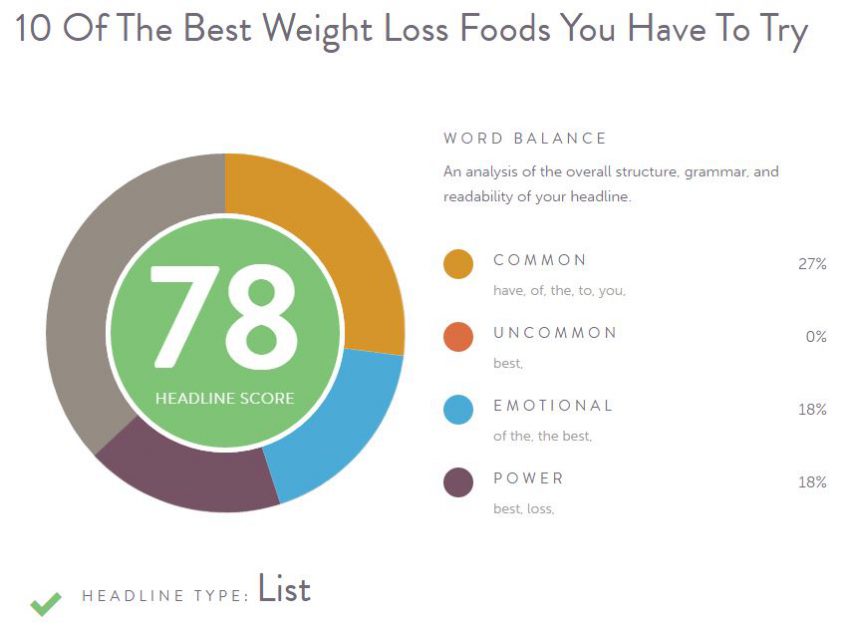
There comes a time in every business owner’s life when you plateau. Like lifting weights, it gets harder to see significant results from the same amount of effort.
Many times this plateau comes in the form of “no new leads”. Your current lead base is drying up, and you need more people to sell your product to.
Well, let me ask you something…
How would you like to generate 10,000 leads for free?
It sounds like a fantasy. It’s not.
Blogging – or, more specifically, content marketing – has proven time and time again to be a lead generation machine. And, unless you hire someone to do it for you, it allows you to generate leads online for free.
Want some examples? Take a look at these stats:
Sure, these places are big now, but they all started just like you, with a business and an idea. By implementing a blog, they were able to drive traffic through social media and search engines, then capture that traffic’s email using lead magnets and content upgrades (which we’ll discuss in this guide).
You know the saying… a journey of a thousand miles begins with a single step. That step is reading this post and learning how to start a successful blog today.
Note: This post assumes you already know how to add a blog to your website. If not, here’s a great guide to get it set up.
Don't plateau. Get leads now by starting a blog. Click To TweetWant to generate leads right now without starting a blog? Check out our post on guest blogging.
To make this post easier to navigate, here’s a quick index:
How Does Blogging Generate Leads?
Tips on Blogging from Expert Bloggers
Step 1: Create a Blog Content Strategy
Step 2: Write a Successful Blog Post
You’ve seen my magical examples with hundreds of thousands of leads. But how does one go from nothing to a successful blog that churns out leads like a machine?
Well, I won’t lie to you – this is a long-term strategy. Most of the experts, like Neil Patel and Eric Sue, say it takes at least 3-6 months to start seeing consistent results from content creation.
It takes this long because it takes time to:
However, there is a snowball effect.
Once you see a little bit of progress – a post ranks well or a key person shares your blog post – you tend to build up and see more success. Like snow accumulating down a hill, you get more email subscribers, more people share your content, and more posts rank well in search engines.
It starts to look like this, which you’ll see is the organic growth for Cameron Conaway’s company blog (note: this graph is in 50,000 increments, so what looks like a small gradual increase is thousands of visitors):

This snowball of increased traffic, when capitalized upon, helps you to continually generate leads which in turn creates more sales (which you’ll hear from some of the experts in the next section).
Starting a blog is marketing 101. But before I dive into how to start a successful blog, I wanted to give you some words of wisdom (and show you what’s possible) from the world’s blogging experts.
Want to get started right now? Click here to skip right to step one.
First up is Cameron Conaway, content marketing manager at Klipfolio.

We’re a few weeks into March and our blog posts have had about 20,000 unique visitors with one piece having a time-on-page of over 10 minutes (this is far greater than average, and is important for ranking on search engines). The vast majority is organic traffic, and this number is steadily growing month-over-month.
Across all resources on our site we’re at about 500,000 unique visitors. On a typical day over 300 readers offer up their email to download one of our guides (that’s 300 leads a day!!).
It can be difficult in a fast-growing SaaS company to maintain the dogged patience necessary to implement a long-term SEO and content marketing strategy, but we’re reaping the rewards of it. And we feel like we’re just getting started!
We own critical keywords directly related to our product and are in the top 3 listings on Google searches for nearly 1500 queries that are in the wider realm of what our product is, assists with, or solves for. Here’s a glimpse into the organic growth we continue to experience:

Mission critical for us, and where you could say we’re missing the mark, is in organizing our content and in creating healthier, segmented journeys for our subscribers.
Three pieces of advice:
You can find Cameron on Twitter or Facebook if you want to connect.
Next up I asked Shayla Price, a B2B content marketing consultant:

One of my B2B SaaS clients receives a consistent 70% email opt-in rate. The team’s success is contributed to high-value lead magnets that provide readers with actionable content. Their relevant ebooks, checklists, and resource guides give leads something they can’t find anywhere else.
Webinars were one of the best ways to generate traffic to my clients’ blogs. If you’re hosting an informal, information-only webinar, directing attendees to your blog is an effective way for them to learn more about your products and services without the direct sale.
Content upgrades (a piece of content, such as an ebook or cheat sheet, you offer your reader in exchange for their email) offered the best method to boost leads. You know exactly what interests the lead and how to offer them more value. This insight moves the lead down the sales funnel faster.
Relying heavily on social media was one of my client’s major mistakes. Social can only do so much. Businesses need several sources to drive traffic.
Do your research. Identify your target audience’s interests to help you create valuable content.
You want people excited about learning from your team. So take the time to add some fun to your blog posts with videos, GIFs, and social media screenshots.
Get to know Shayla on Twitter & LinkedIn.
Finally I spoke with Sujan Patel, one of the world’s leading digital marketing experts:

The best way to generate traffic and leads to a blog, and my first recommendation to anyone starting a blog, is to focus on building an email list.
My email list is one of my biggest sources of repeat traffic, and the people on my list are my biggest fans. I can count on them to share my content, give me feedback on projects I’m working on, and spread the word about my SaaS products and marketing agency. It’s also been the primary driver behind building my personal brand.
The biggest regret of everyone I know who’s had success with content marketing is that they didn’t start building their email list sooner.
There you have it, folks. Blogging and content marketing is a seriously powerful way to drive leads to your website. Now, let’s learn how to start a successful blog the right way.
The first step in starting a successful blog is writing up a content strategy. This is a written document that outlines the topics you’re going to write about, the goals of your blog and your individual posts, and the people you’re writing for.
Why is this important? In the words of Michael Korda…
Besides, Content Marketing Institute found that 62% of successful blog managers have a written goal. Compare that with just 32% whose goal is purely verbal. Writing it down doubles your chance of success!
When it comes to writing down your blog content strategy, there are three crucial pieces you need:
While two and three can be done in any order, the first piece – target market research – should always be done first.
Before you even think about writing anything down, you should know who you’re writing for. If you don’t, you could spend hours writing a post only to find no one cares – or, the wrong audience cares, and it doesn’t generate any leads for you.
In this step, you’ll literally want to create a “reader persona” for who you’ll be writing for. It might look something like this…

(Source: Pinterest)
Open up a Google doc and write down everything you know about someone who would read your blog.
The more detail you write the better. Talk about what they do on the weekends, how they spend their free time, what their work day looks like, and what keeps them up at night. One of the most critical questions to answer is this:
What keeps them up at night? What pain do they have that you can help alleviate with your blog content?
Target market research doesn’t have to be tedious or even very time-consuming. There are three ways you can quickly get some info on your potential readers:
One of the quickest and easiest ways to figure out who your readers might be is through your competitors. Chances are, if your competitor is getting leads through a blog, you can talk about similar topics to generate your own leads.
Seeing who’s reading your competitor’s blog is easy. Try these methods:
If you don’t know who your competitors are, just do a Google search for your topic. For example, to find our competitors, we would search “live chat software”.
Don’t forget to record your findings in your new Google doc!
This is one of my personal favorite ways to do target audience research because the answers are real. No guesswork. You get to learn the exact topics your audience cares about, as well as the language and words they use, which will make your content even stronger.
The easiest way to get survey results is by sending a survey to your email list. You can create a free survey using SurveyMonkey.
Wondering what to ask? You should keep it as simple as possible. Here are the exact questions we used that got great results (we literally told customers it would take just 30 seconds):
Question 1 (multiple choice): If you had to choose just one, which topic would you be most interested in learning about?
Question 2 (free-form text, optional): Based on the topic chosen above, what are the main challenges you face and want to improve upon?
Surprisingly, 83% of survey respondents happily filled out question two despite being optional. Here are the exact results we saw:

Thanks to this simple 30-second survey, we now understand that roughly 74% of our audience wants to learn about marketing and sales, while only 22% wanted to learn about our original topic of customer service. Fascinating!
Pro tip: If you don’t have an email list, you can also use the Formilla Edge Widget to create a popup to get your website visitors to take your survey.

Live chat is a great way to learn what your customers care about. You can ask them directly, in real time, what their struggles and ambitions are and what topics they want to learn about.
Don’t have live chat? You can try Formilla Live Chat for free.
One of the best ways to get consistent reader feedback from live chat is to automatically ask new visitors to answer a question or fill out a survey. Once you set it up, you can configure the chat to pop-up with an automated message, like this:

That’s it for reader research. Now it’s time to use that data to figure out what to write about!
Knowing what to write about is probably one of the hardest pieces of starting a blog. In order to generate leads, you need to write about things your audience is interested in enough to subscribe.
First, come up with your core topic.
At Formilla, our original core topic was customer service. However, we made several assumptions about our readers without actually asking them what they wanted to learn about.
After running the survey we showed you above, we found out our audience really wants to learn about generating traffic and leads – which is why you’re reading this post (if you’re one of those who took the survey, thank you!).

That’s why it’s so important to do your research before you start writing. While our posts aren’t entirely wasted, we may have been better off writing about how to generate leads from the start.
To come up with your core topic, you need to find the intersection between what you’re selling, what you know about, and what your audience cares about. If you can find a niche that overlaps those three things, you’ll have a successful blog in no time.
You might not be able to find a perfect overlap. If that’s the case, look for how you can match what you sell to your audience’s needs. You’ll just have to do more research so you can make it overlap with “what you know”!
Next, create a mind map.
One of the best (and most fun) ways to come up with content topic ideas is by using mind maps. A mind map is the thing you did back in school, where you start with a word (your core topic), then brainstorm every connection you can think of.
Here’s a basic example of how I would start one out:

When creating a mindmap to come up with blog topic ideas, there are a few things to keep in mind:
Once you have your mind map, you can eliminate anything you don’t like or don’t want to write about.

With everything you have left, move on to the next step…
Use keyword research to guide your topics.
While not all of your articles need to be focused on keywords, ranking on Google is likely to be your single largest source of traffic in the long run. If you don’t have at least a basic understanding of how to find and target keywords properly, you’ll miss out on a lot of traffic and potential leads.
It’s really not that hard at it’s most basic level. All you have to do is find keywords around your topic, then follow basic on-page SEO (search engine optimization) strategies to start ranking.
To give you an idea of just how powerful keywords are (and how quickly they can start working), here’s a personal example. We wrote a post called 25 Customer Service Scenarios (And How to Handle Them), targeting the keyword “Customer Service Scenarios”.
In just a week after publishing, the post moved up to the first 5 results on Google. It now sits at spot #2 and pulls in 70-80 visitors per day.

While keyword research can be incredibly extensive and SEO is an ever-evolving topic, I want you to know how to find keywords so you can get started right away. After all, this is how to generate leads.
Finding the right keywords.
In order to optimize a post for a certain keyword, you first have to know how to find that keyword. With all the advanced tools out there, it’s becoming much easier than it has in the past.
To get started with very basic keyword research, all you need is a tool called Google Keyword Planner and a little creativity. Open the tool now and I’ll walk you through the process.
Let’s say you want to write a post about the best foods to eat to lose weight. To start, I would go to Google and type in “best weight loss foods”. This is what we’ll call your “seed keyword”, a fancy name for the keyword you use to get started.

This will give you plenty of results – 6.8 million, to be exact. However, if you scroll down, you’ll see “Searches related to best weight loss foods”:

Take all these results, along with the original seed keyword, and plug them into the keyword planner. It will tell you how much traffic they get, as well as recommend related keywords.

When you find a few promising keywords with high traffic (100-1k at a minimum, usually) it’s time to see how difficult they are to rank for. You get five free searches per day using Moz’s Keyword Explorer, which will give you more information on each keyword.

Looks like “best weight loss foods” is pretty tough to rank for at a 59 out of 100 difficulty. In general, you want to find words with a difficulty of 30 or less whenever possible. These keywords will be possible to rank for in just a few weeks, as we did with our customer service scenarios article.
That said, don’t let a fairly difficult keyword to stop you from writing an article. You can also include semantically and synonymously related keywords, meaning words that are directly related to the main keyword. One article can rank for multiple keywords.
I know this is starting to get a bit confusing – it’s not as difficult as it sounds. Just stick to finding 3-5 highly related keywords with decent traffic for each post. That’s all you need to know to get started.
Note: If you need more than 5 keyword searches in a day, you can use Ahrefs or SEMrush to get keyword difficulty as well. Both sites give you free daily searches. Check out this guide to keyword research if you need more help.
For our post on the best weight loss foods, I’d use “best weight loss foods” as our primary keyword, and “what to eat to lose weight in 2 weeks” (43 keyword difficulty) and “indian food for weight loss” (18 KD) as our secondary keywords.
This process works the same if you’re selling services instead of products. Designhill used this process to come up with the keywords for their service of logo design and it’s helped them rank on page one of Google.
Once you’ve chosen your topics based on keyword research, it’s time to get to the fun part!
By now you have loads of topic ideas and keywords to target. But what do you do with those ideas? In this section, I’ll talk about everything you need to know to write a kick-ass post that ranks on Google and generates leads and traffic to your site, including:
Let’s start with headlines because they’re arguably the most important part of your whole post.
While you probably have some headline ideas in your list of topics, they probably suck. If we’re going to write this weight loss post, “X Foods to Eat to Lose Weight” isn’t going to cut it.
“10 of the Best Weight Loss Foods You HAVE to Try” is going in the right direction. It uses a bit more enthusiasm and includes the target keyword. It also includes a number, which is good – several research studies have shown that headlines with numbers tend to generate 73% more social shares and engagement.
In general, a good headline does several of the following:
You can also use other tricks, like asking a question or including power words. Once you have a headline idea, you can plug it into CoSchedule’s Headline Analyzer to see how well it scores on a scale of 1-100.

For more info on writing headlines, check out this guide on how to write a mind-blowing headline.
Next up is formatting. I place formatting before the actual writing because it’s probably more important. A beautiful blog post beats a well-written blog post almost every time. Why?
Because we live in a world where people don’t read, they skim.
We live in a world where people don’t read, they skim. Click To TweetThey’ll take one look at your post, and if it’s ugly, they’ll bounce. But don’t worry – formatting is pretty easy. You just have to follow a few simple best practices.
Create an outline of headers and subheaders.
Did you notice the index at the beginning of this post? It looked like this:
Step 1: Create a Blog Content Strategy
In case you didn’t notice, these are the actual headers and subheaders (H2 and H3 in HTML speak) I used. The index began as an outline of the post to help me structure my thoughts in a logical order and to help you navigate the post better.
When writing an outline, I usually do something like this:
Header 2
The headers should explain your key points and serve to help the reader quickly find what they need. So, for another example, the post on weight loss foods might look like this:
10 Best Weight Loss Foods
I’m just listing random foods (although they are healthy), but you get the idea. Be sure to use your secondary keywords in the headers as well (like metabolism, Indian foods for weight loss, etc.).
Use bulleted lists to draw the eye to key points.
Bulleted and numbered lists are a great way to emphasize your main takeaways. Every successful blog post makes the most of them.
Break up text with images.
Every great article uses loads of images. However, when adding images, make sure each one:
Which leads me to…
Since your images need to add value (no cheesy stock photos), you need to put extra effort into making sure they’re great. As a rule of thumb, I shoot for one image at every scroll-depth (roughly every 300 words) at a minimum.
If you’re looking for high-quality photographs, you can check out places like:

If you’d rather make your own images (or infographics) for free, check out:
You can also use the Google “labeled for reuse” trick I mention in our guest blogging post to find legal images.
Pro tip: Screenshots are one of my favorite ways to add valuable images to a post. I like using the Greenshot tool, which lets me screenshot certain sections of the screen and edit right from the program.
Now we’re finally talking about writing a post! Becoming a great web content writer doesn’t have to be difficult. Most of the magic comes in editing your work, anyway.
While you could spend years learning to become a great writer, it doesn’t take that long to write something that’s good. You just need to keep a few things in mind:
These are, of course, the complete basics of good writing. There is much to learn. If you want a complete overview on how to write a truly great article, check out HubSpot’s guide.
I also HIGHLY recommend you check out Aaron Orendorff’s guide to writing copy. The guy can write so well you’ll be practically forced to read.
You want traffic. You want leads. You want sales.
Blogging can get all three of these for you. And, it can be done for free.
If you really want to break through that plateau and generate massive leads, you need to commit to the long-term. This is not an overnight strategy. But, I promise you – once that snowball gets rolling, you’ll be glad you put in the effort.
Don’t forget to grab the companion file we’ve put together to go along with this post. You’ll get our content strategy template and some additional resources to help you write better content.
Remember: If you have any questions about this process, drop us a comment. We respond to everyone.
Come back in two weeks for our next guide to learn how to generate leads!
Comments are closed.
This article is excellent and very informative. I am surprised to know that big brands strategy also fails. Thanks to you for informing us about this. This also helps me in branding safely of my product.
I’m glad you found it useful, Arvind! Anyone can fail (or succeed) no matter how big or small. Even Rome fell, and Walmart started in a rinky dink store. 🙂
Hi Bill, what an informative article! All the points are very useful and helps a lot. As you have mentioned above that email lists are very necessary so how do you create an email list? Use lead generation tools like Rapportive, Salsify, AeroLeads, etc or some other method?
Hi,
What a fantastic post! This is so chock full of useful information. I can’t wait to dig deep and start utilizing the resources you have given me.
Great article that brings everything together on successful blogging.
very informative article that makes you think and really find the solutions. I think that person grows only when fails and find an advice. It doesn’t matter this advice came from, the point is that the problem solved.